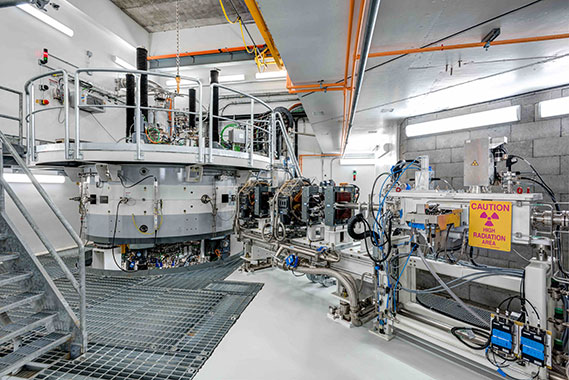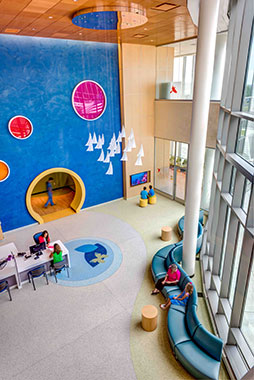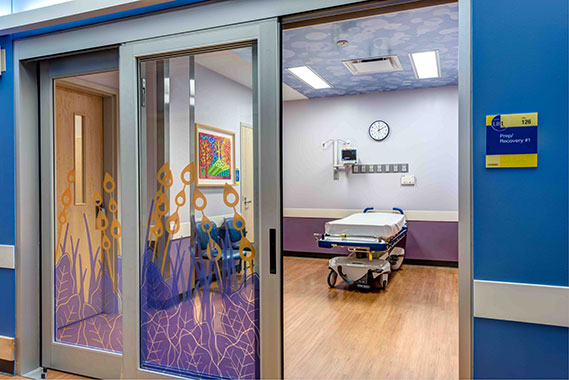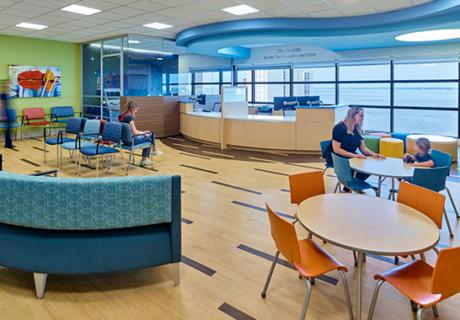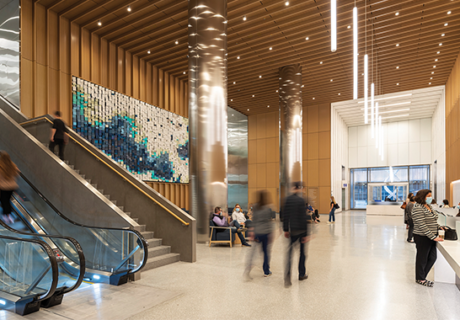PHOTO TOUR: Cincinnati Children’s/UC Health Proton Therapy Center
The Cincinnati Children’s / UC Health Proton Therapy Center, designed by Tsoi/Kobus & Associates, opened in October 2016. It features two treatment gantries (one for children and one for adults) with the potential to add a third treatment gantry.
Part of a major expansion of existing cancer treatment programs, the proton therapy center has an adaptable floor plan that addresses changing technology and care protocols. It also broadens the range of cancer treatment services, offering patients more flexibility in choosing options for appropriate care.
The 89,000-square-foot proton therapy building is physically linked to the existing medical complex at Cincinnati Children’s Liberty Campus, located in Liberty Twp., Ohio. The architectural style of the new facility is consistent with the larger campus in its use of brick and contemporary glass materials. A sloping site provides a two-story entry façade, locating the proton therapy areas below-grade for more efficient radiation shielding.
Separate entrances provide a branded identity for both Cincinnati Children’s and UC Health, the adult patient partner in the center’s development. The facility features two separate waiting areas, which flow to separate (adult and pediatric) nurses’ stations and then to separate patient prep spaces. This allows for a pediatric-focused design approach to the majority of the spaces that a young patient will experience. The two areas meet at the shared treatment corridor, where both adult and pediatric patients access treatment bays.
Reception and pre-treatment areas were designed to facilitate patient wayfinding with the simplest possible corridor arrangement from waiting areas to nursing stations, patient prep areas and treatment rooms. The resulting entry process, from the lobby to treatment, is an easy, near-intuitive progression for patients and visitors.
Colorful and bright graphic images greet children and families in the lobby, creating a playful and calming atmosphere. The facility also features an exterior garden for patient and family use.
Designing the facility to allow targeted welcoming areas, nursing and treatment prep spaces for different populations gives the medical center the opportunity to easily adapt to address the needs of distinct future groups. In addition, building multiple treatment bays that serve adult and pediatric patients as well as a dedicated research bay provides additional future treatment flexibility. The positioning of mechanical equipment behind treatment areas and other public spaces allow for technical adjustments for a particular treatment bay without disrupting procedures in adjacent spaces.
Cincinnati Children’s has had an academic affiliation with the University of Cincinnati’s College of Medicine going back more than 80 years. The facility’s fully dedicated research gantry is expected to draw top scientists to Cincinnati, accelerating understanding of proton therapy and improving treatment options for many different cancers.



